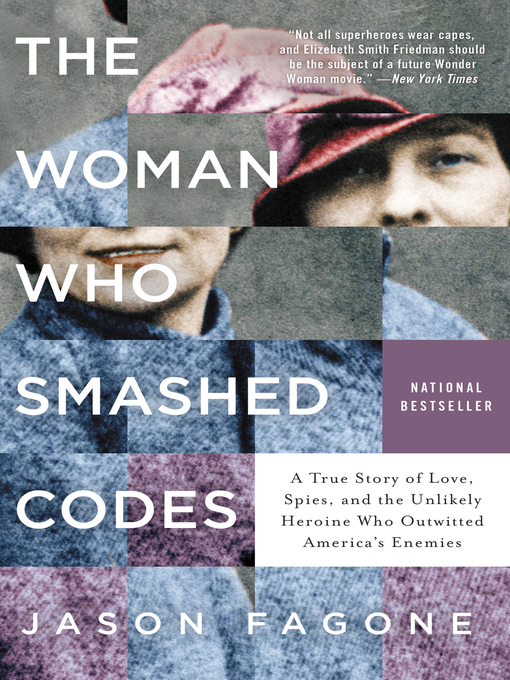
The Woman Who Smashed Codes
A True Story of Love, Spies, and the Unlikely Heroine Who Outwitted America's Enemies
کتاب های مرتبط
- اطلاعات
- نقد و بررسی
- دیدگاه کاربران
نقد و بررسی

July 15, 2017
The wife of the groundbreaking cryptanalyst William Friedman finally gets her due as equal partner in their pioneering codebreaking work over 30 years.While her husband was long treated by the National Security Agency as the "founder of the science of modern American cryptology," it was the partnership with his wife, Elizebeth, that drove the two to brilliant heights in the field. Journalist Fagone (Ingenious: A True Story of Invention, Automotive Daring, and the Race to Revive America, 2013, etc.) does a bang-up research effort in unearthing the true story of this humble Midwestern codebreaker, who often gave her husband the credit while her own work (and much of his) had to remain in secrecy because of concerns of national security. However, the sexism of the time would also play a role in how her work was undervalued and underreported; as the author notes, "when powerful men started to tell the story [e.g., FBI director J. Edgar Hoover], they left her out of it." A remarkable meeting of the minds occurred when Elizebeth, a recent college graduate, was introduced to William, a mild-mannered geneticist, at the wealthy Chicago businessman George Fabyan's fabulous Riverbank "laboratory" in Geneva, Illinois, in 1916. Elizebeth had been hired to figure out the cipher in Shakespeare's First Folio that was supposed to reveal its author as Francis Bacon, and while she lost faith in the project, she found she had a knack for code-breaking. With the war escalating, she and William led the "Riverbank Department of Ciphers," fed by a stream of encrypted messages from Washington, D.C. Over time, they developed into a fine-tuned team, and Fagone explains without arduous technicality how the process worked--then pen and paper, without machines. Between the wars, the two wrote books, and Elizebeth helped crack messages from rumrunners for the Coast Guard. World War II brought the challenges of breaking Magic and Enigma, among other astounding achievements across the globe. An engaging resurrection of a significant player in the world of cryptology.
COPYRIGHT(2017) Kirkus Reviews, ALL RIGHTS RESERVED.

February 15, 2017
Now that The Imitation Game has familiarized everyone with the concept of code-breaking, it's time to step back to its origins during World War I. In 1912, Shakespeare expert (and hence language wizard) Elizebeth Smith was introduced to both code-breaking and visionary cryptologist William Friedman, who became her husband. Journalist Fagone details Smith's particular contributions to cryptology, which include helping to capture gangsters during Prohibition and exposing Nazi spies in South America. With a 50,000-copy first printing; an LJ Editors' Spring Pick, p. 23.
Copyright 2017 Library Journal, LLC Used with permission.

Starred review from August 1, 2017
Fans of forgotten history, take note. Fagone (Ingenious: A True Story of Invention, Automotive Daring, and the Race to Revive America, 2013) has found a twentieth-century story that reads more like a thriller than nonfiction. Furthermore, Elizebeth Smith Friedman's life has all the hallmarks of a Hollywood hit, and she is long overdue for the limelight. One of the greatest cryptologists of all time, she started her career in 1917, working for a mercurial millionaire who sought to prove that a hidden code exists in Shakespeare's works that reveals Francis Bacon as their true author. After meeting an equally gifted code-breaking genius on that project, William Friedman, the man who became the father of the National Security Agency, the two broke German codes in WWI. Then, as a married couple working for the government, Elizebeth unraveled cyphers created by rumrunners and gangsters during Prohibition, then moved on to undermine the Nazis. She never sought the spotlight, and as others, notably J. Edgar Hoover, took credit for her achievements, she was forced by national security requirements to remain silent. Riveting, inspiring, and rich in colorful characters, Fagone's extensively researched and utterly dazzling title is popular history at its very best and a book club natural.(Reprinted with permission of Booklist, copyright 2017, American Library Association.)

























دیدگاه کاربران